Report Title:
Application of Functional Material Fullerene in Regulating the Electron Transport Performance of Perovskite Solar Cells
Reporter: Yang Shangfeng
Report time: 13:00-13:35, May 9
Report place: 3-102, West Main Building, Tsinghua University
Organizer: Department of Electrical Engineering and Applied Electronics
Brief about the reporter:
Yang Shangfeng is a professor at the University of Science and Technology of China, a doctoral supervisor, a winner of the National Outstanding Youth Fund, and a fellow of the Royal Society of Chemistry. He received his Ph.D. degree from Hong Kong University of Science and Technology in 2003. From February 2004 to December 2007, he was funded by the Humboldt Foundation to work at the Leibniz Institute for Solid State and Materials Research in Germany. In December 2007, he joined the Department of Materials Science and Engineering of University of Science and Technology of China and Hefei National Laboratory of Microscale Physical Science as a dual-appointed professor. Since October 2014, he has served as Executive Director of the Department of Materials Science and Engineering. Since October 2015, he has served as Deputy Director of the Key Laboratory of Energy Conversion Materials of the Chinese Academy of Sciences. He has been engaged in the research of fullerene functional materials for a long time, and now he is studying the synthesis of new carbon nanomaterials and their applications in photoelectric energy conversion. He has published more than 300 papers in international academic journals including Nature Commun., Adv. Mater., Angew. Chem. Int. Ed., J. Am. Chem. Soc., and so on. He has won the "Outstanding Young Teacher Award" from the Alumni Foundation of China University of Science and Technology, and the "Outstanding Mentor Award" and the "Zhuli Yuehua Outstanding Teacher Award" of the Chinese Academy of Sciences.
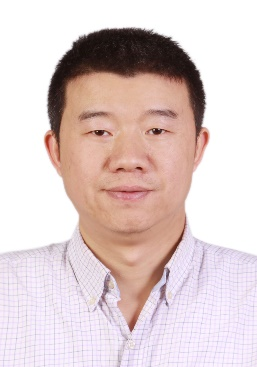
Report abstract:
Fullerene, with a unique closed cage structure and fascinating physical and chemical properties, is extensively applicable in the fields of light, electricity, and magnetism. As fullerene is characterized in strong electron affinity, high electron mobility and low recombination energy, fullerene functional materials are widely used in the electron transport layer, cathode interface layer or defect passivator of perovskite solar cells. This report will introduce his work in recent years in developing new fullerene derivatives and applying them to the electron transport layer of perovskite solar cells or additives for the photoactive layer of perovskite.
Report title:
Selenium Antimony Sulfide: A New Member of the Photovoltaic Material Family
Reporter: Chen Tao
Report time: 13:35-14:10, May 9
Report place: 3-102, West Main Building, Tsinghua University
Organizer: Department of Electrical Engineering and Applied Electronics
Brief about the reporter:
Chen Tao is a professor and doctoral supervisor of University of Science and Technology of China; graduated from Nanyang Technological University in Singapore with a P.h. D in 2010, worked as a research assistant professor in the Department of Physics of the Chinese University of Hong Kong from 2011 to 2015, and was elected into the “Overseas High-level Talent Introduction Program” in 2015 and joined the Department of Materials Science and Engineering, University of Science and Technology of China. In the past ten years, he has been engaged in the basic and applied basic research of solar cells, carried out a series of work in the inorganic semiconductor material preparation, defect control, efficiency improvement, and large-area device preparation, published more than 100 papers including Nature Energy, Nature Communications., Energy & Environmental Science, Advanced Materials, Science Bulletin and other journals, and his research work has been reported by Nature Research, Nature Energy News & Views, MaterialsViewsChina, Science and Technology Daily, China Daily, etc., and served as an editorial board member of "Materials China".
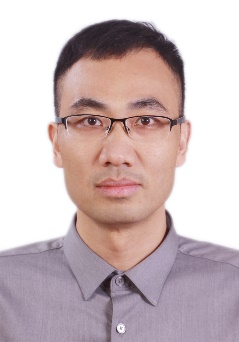
Report abstract:
Selenium antimony sulfide [Sb2(S,Se)3] is an emerging solar cell light-absorbing material, its band gap can be adjusted in the range of 1.1-1.8 eV with the change of the S/Se ratio, and it has a high light absorption coefficient (Up to the order of 105 cm-1in the visible light range). In addition, this compound is relatively stable to water and oxygen, contains abundant elements, and is environmentally friendly. Based on the above characteristics, selenium antimony sulfide can be used as a light-absorbing material for single junction and tandem solar cells. As a new photovoltaic material, its basic properties can be studied in an important subject so as to construct a suitable device structure to improve the photoelectric efficiency. This report mainly introduces the recent work of the research group in the preparation of selenium antimony sulfide solar cells, including interface materials and interface-induced crystal orientation adjustment methods [1,2], the preparation of high-quality selenium antimony sulfide films by hydrothermal deposition [3 ,4], and the study of point defects and voltage loss mechanism [5, 6]. They realized a breakthrough in photoelectric conversion efficiency of >10.0% through the high-quality thin film, making it another photovoltaic material with an efficiency of more than 10% after organic/inorganic hybrid perovskite.
Report title:
Structure and Interface Design to Improve the Performance of Lithium Battery Electrodes and Separators
Reporter: Yao Hongbin
Report time: 14:10-14:45, May 9
Report place: 3-102, West Main Building, Tsinghua University
Organizer: Department of Electrical Engineering and Applied Electronics
Brief about the reporter:
Yao Hongbin is a professor and doctoral supervisor in the Department of Applied Chemistry, University of Science and Technology of China. He was an undergraduate in the University of Science and Technology of China during 2002-2006, a Ph. D of Hefei National Microscale Laboratory during 2006-2011 under the tutelage of Academician Yu Shuhong, and a postdoctoral of Stanford University during 2012-2015, and his co-supervisor is Professor Cui Yi. In 2015, he was elected into the Talents Program of the Organization Department of the CPC Central Committee and returned to work at the University of Science and Technology of China. His research work focuses on the application of high-efficiency metal halide luminescent materials and devices, as well as new solid-state lithium metal batteries. He has published more than 130 SCI papers and been cited more than 15,000 times, with an H factor of 58, and as the corresponding author in 35 SCI papers (20 papers with IF>10), including 1 in Acc. Chem. Res. , 4 in J. Am. Chem. Soc. , 2 in Nat. Commun. , 3 in Angew. Chem. Int. Ed. , 2 in Adv. Mater. , 4 in Nano Lett. and so on. He has presided over three general projects of the NSFC (including one completed). He was elected into the “Overseas High-level Talent Introduction Youth Project” of the Organization Department of the CPC Central Committee (2015), and won the second prize of the National Natural Science Award (the fifth completer, 2016) and the first prize of Anhui Science and Technology (the fifth completer, 2015), and a Clarivate Highly Cited Researcher (interdisciplinary field) in 2019 and 2020.
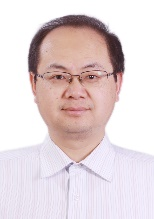
Report abstract:
It is very important for our growing demand for energy storage to develop rechargeable lithium batteries with high energy density, excellent rate performance and high safety. Based on the ion and electron conduction mechanism in the rechargeable lithium battery system, it is an effective strategy to improve its performance by optimizing the electron and ion transport/mass transfer in the electrode and the diaphragm through structure and interface design. This report introduces some research progress of the research group in the multi-level structure and interface design of rechargeable lithium batteries in recent years. In terms of cathode materials, the research team proposed to enhance the mass transfer effect of lithium ions by designing a vertical pore structure, and realize that the ultra-thick electrode maintains a high capacity even at a high rate. In terms of lithium metal anode materials, the research team realized the high-efficiency electrochemical process of lithium metal deposition/extraction and site domain restriction to inhibit the growth of lithium dendrites through three-dimensional network structure, vertical pore structure current collector design and three-dimensional multi-stage pore solid state composite design, providing a new idea for the design of high-performance lithium metal anode. In the design of rechargeable lithium battery separators, the research team used biomass fibers as the frame to prepare green and environmentally friendly high-performance lithium-ion battery separators through pore-making or surface modified flow measurement. In addition, the research team has also applied the bionic structure design to the commercialized lithium-ion battery separator coating, which enhances the impact resistance of the separator and improves the safety of the lithium battery against external impact.
Report title:
Highly efficient perovskite LEDs featuring perovskite nanocrystals
Reporter: Xiao Zhengguo
Report time: 15:00-15:35, May 9
Report place: 3-102, West Main Building, Tsinghua University
Organizer: Department of Electrical Engineering and Applied Electronics
Brief about the reporter:
Xiao Zhengguo is a special-appointed professor and doctoral supervisor of the University of Science and Technology of China. In August 2015, he graduated from the University of Nebraska-Lincoln with a doctorate degree in materials engineering under the tutelage of Professor Jinsong Huang, an expert in the field of optoelectronics. From September 2015 to February 2018, he was engaged in post-doctoral research in the Department of Electronic Engineering of Princeton University under the tutelage of Professor Barry P. Rand. Since March 2018, he has been a professor in the Department of Physics of the University of Science and Technology of China. He has been long-term commitment to the research of new optoelectronic materials and devices, including solar cells, photodetectors, LEDs, etc. based on organic and hybrid perovskite materials. In 2014, he won the National Outstanding Self-financed International Student Award; in 2014 and 2015, he won the Outstanding Research Assistant Award from the Department of Materials and Engineering at the University of Nebraska; in 2015, he won the Silver Medal for Graduate Students of the American Society for Materials. In recent years, he has published more than 40 papers in journals such as Nature Materials, Nature Photonics, Nature Communications, Advanced Materials, etc., which have been cited more than 13,000 times with an H-index of 38
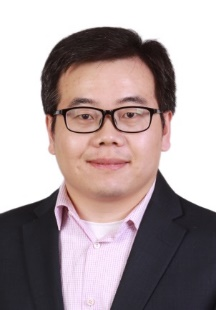
Report abstract:
Hybrid perovskites are emerging as a new generation of solution processed semiconducting materials with fantastic optoelectronic properties. Solar cells and light-emitting diodes (LEDs) incorporating these perovskites are rapidly becoming serious contenders to rival the leading technologies. Photovoltaic power conversion efficiencies have jumped from 3% to over 25% in ten years, and external quantum efficiency of perovskite LEDs has increased dramatically from 0.1% to over 20% in the past five years. Formation of perovskite nanocrystals is a good way of enhancing radiative recombination rate for perovskite LEDs. In my talk, I will focus on the grain size/crystallinity engineering of perovskite films. I will cover topics including perovskite nanocrystal formation, trap passivation, as well as large-area fabrication of nanocrystal films for perovskite LEDs.
Report title:
Research on Key Technologies of Crystalline Silicon-Perovskite Two-terminal Tandem Solar Cells
Reporter: Xu Jixian
Report time: 15:35-16:10, May 9
Report place: 3-102, West Main Building, Tsinghua University
Organizer: Department of Electrical Engineering and Applied Electronics
Brief about the reporter:
Dr. Xu Jixian received a bachelor's degree in physical electronics and a master's degree in optical engineering from Beijing Institute of Technology, and a Ph.D. from the University of Toronto. After that, he conducted postdoctoral research at Stanford University, University of Colorado Byrd, and the US National Laboratory for Renewable Energy. He has long been engaged in basic research on optoelectronic materials and devices, and their applications in new energy and photoelectric detection, etc. For example, he has realized a silicon-based perovskite two-terminal tandem solar cell with an efficiency of >27%, which proves the feasibility and great prospect of using tandem technology to significantly break through the theoretical limit of silicon cells; he has made a certified world record of infrared quantum dot solar photovoltaic conversion efficiency, which is included in the world record ranking chart NREL Chart. In the past five years, he has published many research papers in Science, Nature Nanotechnology and other academic journals as the first author/corresponding author, and won the 2020 Scientific Exploration Award (in the field of energy and environmental protection).
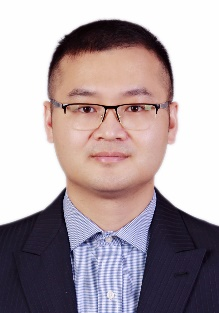
Report abstract:
The demand for solar clean energy is high in China, but land resources are precious. Therefore, it can create significant economic and social benefits if the power generation capacity can be highly improved from the existing crystalline silicon cells on a same land area. Traditional crystalline silicon cells can absorb visible light and near-infrared light in sunlight and convert them into electrical energy, but the photons in the visible range are involved in thermal relaxation, and thus a part of the energy is lost in the form of thermal energy. The tandem cell technology can be used to directly prepare a perovskite thin film device that can efficiently convert visible light on the surface of a crystalline silicon cell, while the silicon cell is only responsible for converting the infrared light transmitted through the perovskite film, and the combination of the two can theoretically break through the theoretical limit of a single battery. His research team has realized photoelectrical couple with an improved perovskite photovoltaic film and a crystalline silicon cell in an efficiency of ~21%, constructed a crystalline silicon-perovskite two-terminal tandem cell, by which the solar energy conversion efficiency is improved to 27%, and it has proven the feasibility and great prospects of the layer technology to break through the theoretical limit of silicon cells. The report mainly introduces the suppression of photo-induced phase separation in perovskite materials, suppression of perovskite device hysteresis, interface optimization, and stability measurement.
Report title:
Multi-scale Structure Characterization of Thin Film Photovoltaic Devices
Reporter: Hu Qin
Report time: 16:10-16:45, May 9
Report place: 3-102, West Main Building, Tsinghua University
Organizer: Department of Electrical Engineering and Applied Electronics
Brief about the reporter:
Hu Qin is a special researcher and doctoral supervisor at the School of Information Science and Technology/School of Microelectronics, University of Science and Technology of China. She received a bachelor's degree from Shandong University in 2012 and a doctorate degree from Peking University in 2017. 2017-2020, she studies as a postdoctoral researcher at the Lawrence Berkeley National Laboratory/University of Massachusetts - Amherst. She joined the University of Science and Technology of China at the end of 2020. She has long been engaged in the research of optoelectronic functional materials and devices, including the construction of high-performance thin-film devices based on new perovskite semiconductors, organic conjugated polymers, block copolymers, wide-bandgap semiconductors and other new functional materials, including photovoltaic devices, Photodetector, memristor, etc. She is also engaged in the research on the combination with synchrotron radiation X-ray in-situ characterization, ultrafast spectroscopy, electron microscopy and other advanced technologies to link micro-nano structure-physical and chemical properties-device performance. In recent years, Dr. Hu Qin has published more than 50 papers in well-known international journals such as Science, Nature Communications, Joule, Advanced Materials, ACS Nano, Science Bulletin, etc., which have been cited more than 2,800 times, with h factor 19 and i10 factor 29. She has published 15 papers as the first/co-first/ and co-corresponding author, many of which are ESI Highly Cited Articles and ESI Hot Articles. As the main inventor, she has been authorized 3 Chinese patents. He has been invited to serve as a reviewer for more than ten journals such as Advanced Materials for a long time, and has presented nearly 20 academic reports at international academic conferences such as APS, SPIE, and MRS.
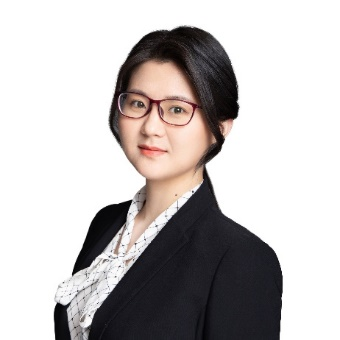
Report abstract:
Thin-film photovoltaic devices have developed rapidly in recent years with the development of new materials and the advancement of new characterization technologies. The synchrotron radiation X-ray characterization technology can be used in the multi-scale structural characterization and in-situ observation of functional films depending on its advantages in high brightness, strong polarization, and adjustable energy, and thus it has attracted extensive attention from scientists in the photovoltaic field. Dr. Hu Qin has been studying synchrotron radiation characterization technology (including GIWAXS/SAXS, RSoXS, PEEM, etc.) at the Advanced Light Source (ALS) at Lawrence Berkeley National Laboratory in the United States in 2015, and has made a series of progress in the field of perovskite solar cells and organic solar cells with collaborators in recent years. This report will mainly describe the research progress of crystallization kinetics and microstructure control in printing perovskite films, molecular arrangement and interface polarization of the all-polymer active layer, and transport of perovskite/non-fullerene heterojunction carriers of Dr. Hu Qin and her collaborators.

















 News & Events
News & Events